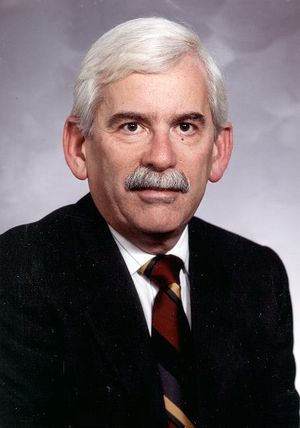Jack M. Sipress
- Birthdate
- 1935/04/09
- Birthplace
- Brooklyn, NY, USA
- Associated organizations
- Bell Labs
- Fields of study
- Communications
- Awards
- IEEE Award in International Communication, IEEE Simon Ramo Medal
Biography
Jack M. Sipress was born on April 9, 1935 in Brooklyn, New York. He received the Bachelor, Master, and Doctor of Electrical Engineering degrees from the Polytechnic Institute of Brooklyn in 1956, 1957, and 1961, respectively.
As Director of the Undersea Systems Laboratory at AT&T Bell Laboratories, Dr. Sipress provided technical leadership for planning, development and implementation of the first generation of undersea lightwave digital communications systems. This international undertaking led to the initial deployment of lightwave submarine cable across the Atlantic and Pacific Oceans in 1988 and 1989, respectively. Such technology has now been deployed to provide global digital connectivity between over 40 countries. Currently, Dr. Sipress was providing technical leadership for the introduction of optical amplifier technology across the oceans in 1995.
During 1957 and 1958, Dr. Sipress was with the Microwave Research Institute performing investigations related to active networks and feedback systems. In 1958, he joined Bell Laboratories as a Member of Technical Staff where he initially carried out research and exploratory development related to active networks. In 1961, Dr. Sipress assumed the position of supervisor of the Systems Analysis Group and, from 1962 to 1969, he was supervisor of the Digital Transmission Studies Group. During this period, his activities involved theoretical studies, systems planning and system design for digital transmission lines continuing wire pair cable, coaxial cable and waveguide media.
In 1969, Dr. Sipress was appointed head of the T2 Digital Line Department; in 1972, head of the T4M Digital Line Department; in 1976, head of the Satellite Transmission Department; and in 1978, head of the Lightwave System Development Department. His activities during this period included leadership for final development of a digital transmission line operating at 6.3 Mb/s over wire pair cable, development of a digital transmission line operating at 274 Mb/s over coaxial cable, system design of a satellite system to provide various communications services and, finally, the initial development of 45 and 90 Mb/s digital transmission systems operating over lightguide cable. In 1980, he was appointed director of the Transmission Technology Laboratory with responsibility for development of advanced integrated circuits, digital signal processing and design techniques for communications services.
Later in 1980, Dr. Sipress was appointed director of the Undersea Systems Laboratory. In 1990, he assumed the additional position of Vice President for Development and Manufacture at AT&T Submarine Systems, Inc., and, in 1992, Chief Technical Officer of AT&T Submarine Systems. In these positions, he was responsible for technical leadership and for development and manufacture of submarine cable communications facilities and associated technology.
Dr. Sipress was the recipient of the 1988 IEEE Communications Society Edwin Howard Armstrong Achievement Award, the 1991 IEEE Award in International Communication, and the NEC-sponsored 1991 C&C Prize.
Dr. Sipress was a Fellow of the IEEE. He has held various positions in the IEEE including Member of the Board of Governors of the Communications Society, the Publications Board, and the Awards Board.
